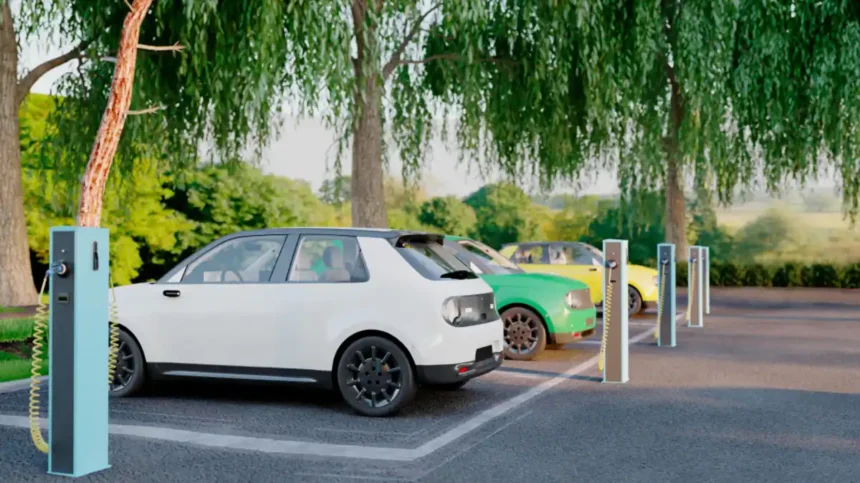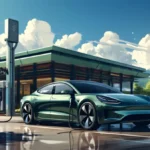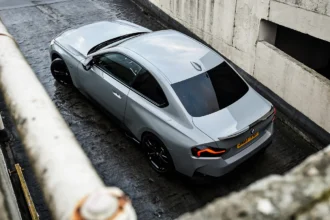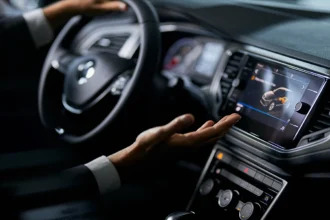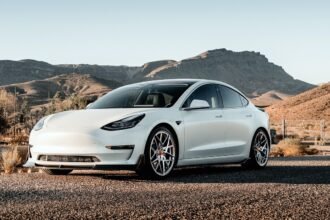Parking in crowded lots or navigating tight urban spaces can be a frustrating experience for many drivers. Fortunately, car manufacturers have developed innovative solutions to address these challenges through the use of autonomous parking systems.
This article delves into how the latest car parking tech in the USA is revolutionizing the driving experience, offering a seamless, hassle-free approach to parking with minimal driver input. By utilizing advanced sensors and real-time data analysis, this cutting-edge technology represents a major step forward in automotive innovation. Let’s explore how autonomous parking systems work, the benefits they provide, and what the future holds for this transformative technology.
What is an Autonomous Parking System?
At its core, an autonomous parking system allows vehicles to park themselves with minimal or no driver intervention. Using a combination of sensors, cameras, and AI-powered algorithms, the car can detect available parking spots, steer, accelerate, and brake to fit into even the tightest spaces.
With car parking tech USA rapidly advancing, these systems are becoming increasingly popular in both luxury vehicles and more affordable models. The technology aims to solve common parking challenges, such as parallel parking in congested areas, parking in garages, or squeezing into narrow spaces.
How Does Autonomous Parking Work?
Autonomous parking relies on several key technologies working together to guide the vehicle safely and precisely into a parking space. Here’s a breakdown of the technology components that make autonomous parking systems possible:
1. Ultrasonic Sensors
Ultrasonic sensors are used to measure the distance between the car and surrounding objects, such as other vehicles, curbs, and walls. These sensors create a 360-degree view around the car, helping it avoid collisions while parking.
2. Cameras
Many vehicles equipped with autonomous parking also have multiple cameras, providing a detailed view of the environment. These cameras work alongside the sensors to identify parking spaces and detect obstacles. In some systems, drivers can view a live feed of the parking process on their dashboard screens.
3. Artificial Intelligence and Algorithms
The heart of an autonomous parking system lies in its AI-powered algorithms. These algorithms process real-time data from the sensors and cameras to make critical decisions, such as choosing the right parking spot, calculating the required turning angle, and controlling speed and braking.
4. Vehicle-to-Infrastructure Communication (V2I)
In more advanced car parking tech USA solutions, vehicles can communicate with surrounding infrastructure, such as smart parking meters or city parking networks. This enables cars to find available spaces more efficiently by accessing real-time parking data.
Key Benefits of Autonomous Parking Systems
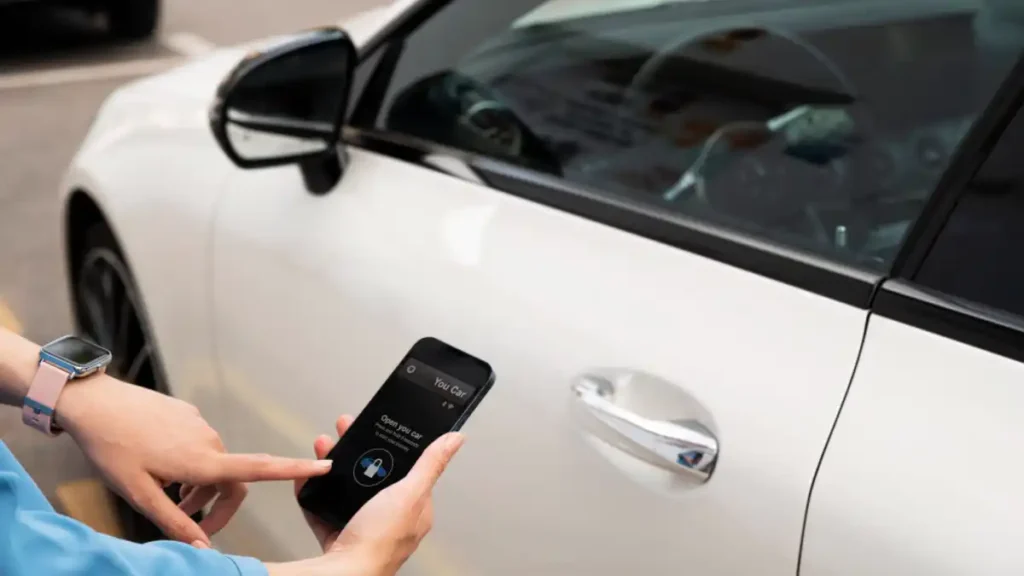
Why should drivers consider a vehicle with an autonomous parking system? Here are some of the main benefits:
1. Stress-Free Parking
For many drivers, parking—especially in tight spaces—can be stressful and time-consuming. An autonomous parking system takes the hassle out of parking by handling the steering, braking, and positioning, allowing drivers to relax while their car does the work.
2. Improved Safety
One of the biggest advantages of autonomous parking systems is improved safety. With sensors and cameras providing a 360-degree view, the car is much less likely to hit obstacles or other vehicles. This can significantly reduce the chances of fender benders and other parking-related accidents.
3. Precision Parking in Tight Spaces
Many drivers struggle to park in tight spaces, particularly parallel parking spots. Autonomous parking technology excels in these situations, as it can calculate the perfect angles and movements needed to fit into small spaces with minimal clearance.
4. Enhanced Convenience for All Drivers
Whether you’re an experienced driver or a novice, an autonomous parking system can make parking easier and more convenient. For older drivers or those with physical disabilities, it can significantly reduce the physical strain of parking, making driving more accessible.
Popular Autonomous Parking Systems in the USA
The adoption of car parking tech USA is growing rapidly, with many automakers offering vehicles equipped with autonomous parking features. Here are some of the most popular systems available in the U.S. market:
1. Tesla Autopark
Tesla’s Autopark feature is part of the company’s Full Self-Driving (FSD) package. It allows the car to park itself in parallel or perpendicular spots without driver input. Using cameras and sensors, Tesla vehicles can identify available spaces and park with precision.
2. BMW Parking Assistant Plus
BMW’s Parking Assistant Plus provides drivers with a range of parking options, including automatic parallel parking, reversing into parking spaces, and even guiding the car into tight spots. The system also features a 3D view of the vehicle’s surroundings for maximum precision.
3. Mercedes-Benz PARKTRONIC
Mercedes-Benz’s PARKTRONIC system uses ultrasonic sensors to detect suitable parking spaces and then automatically steers the vehicle into the spot. Drivers only need to control the accelerator and brake pedals, while the system handles the rest.
4. Ford Active Park Assist
Ford’s Active Park Assist allows vehicles to park in both parallel and perpendicular spots. The system can also help drivers exit tight spaces. Using a combination of cameras and sensors, it precisely guides the car into the available spot.
The Future of Autonomous Parking
As autonomous parking systems become more advanced, we can expect further innovations in the near future. Here’s a glimpse of what the future holds for car parking tech USA:
1. Fully Autonomous Parking Garages
In the future, we may see parking garages designed specifically for fully autonomous vehicles. These garages will allow cars to drop off passengers at the entrance and then park themselves in designated spaces. Upon returning, the car can automatically drive to the entrance to pick up the driver.
2. Integration with Smart City Infrastructure
As cities become smarter, we can expect autonomous parking systems to integrate more closely with urban infrastructure. Vehicles will be able to access real-time parking data, reserve spots in advance, and optimize routes to parking facilities, reducing congestion and emissions.
3. Over-the-Air Software Updates
Like many other aspects of car technology, autonomous parking systems will likely improve over time through over-the-air (OTA) software updates. This means that vehicles can receive new features, enhanced parking algorithms, and better safety protocols without needing to visit a dealership.
Challenges Facing Autonomous Parking Systems
While autonomous parking systems have come a long way, there are still some challenges that need to be addressed:
1. High Costs
Currently, many autonomous parking features are only available in high-end vehicles, making them less accessible to the average consumer. However, as the technology becomes more widespread, prices are expected to drop, making it more affordable for a broader range of drivers.
2. Parking Infrastructure
For fully autonomous parking systems to reach their full potential, there needs to be significant investment in parking infrastructure. This includes developing smart parking garages and ensuring that public parking lots are equipped with the necessary technology to communicate with vehicles.
3. Cybersecurity Concerns
As with all connected vehicle technologies, there is a risk of cybersecurity threats. Autonomous parking systems must be built with robust security measures to prevent hacking or unauthorized access to vehicle systems.
Conclusion
The rise of autonomous parking systems marks a significant step forward in the evolution of automotive technology. By combining sensors, cameras, AI, and real-time data, these systems make parking safer, easier, and more convenient for drivers.
As car parking tech USA continues to advance, we can expect even more exciting innovations in the coming years, making autonomous parking not just a luxury but a standard feature for all drivers. Whether you’re a fan of cutting-edge technology or just tired of the daily parking grind, autonomous parking systems represent the future of driving convenience.


